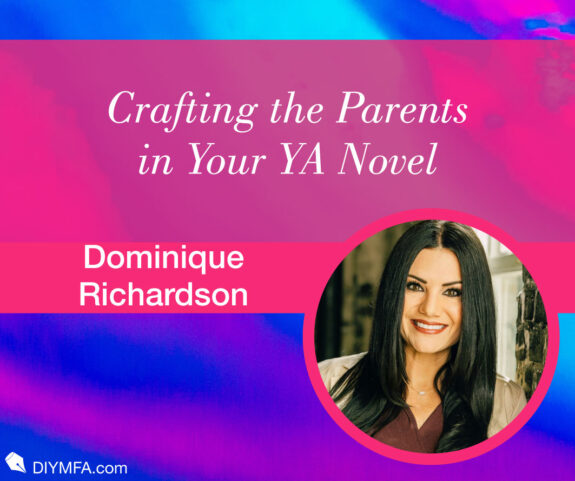Who doesn’t love the daring feats of Harry Potter, Hermione Granger, and Ron Weasley? And most of the time they’re acting independently, without a parent in sight. That being said, this independent action gets them in all sorts of trouble with not only parents, but their teachers and school headmaster, Dumbledore.
That’s the thing with parents in Young Adult literature—can’t live with them, can’t live without them. Teens are exploring their world for the first time, attempting to establish their own identity separate from their families of origin, so you will find almost all characters going on adventures independent of their parents.
If you are writing a young adult novel, it’s important to consider your characters’ parents on the front end, and develop them into three-dimensional, well rounded, fully fleshed out people to avoid stereotypes and cookie cutter plot devices.
Where it Started, Where We Are
When some of the first young adult novels came out in the 1960s, Julie Just from the New York Times said the parent narrative “fit in neatly with the classic narratives: its strongest stories were about orphans and lost boys of one kind or another.” In these novels, issues weren’t with parents but with other kids.
But by the 70s and 80s, the narrative started to shift the conflict from friendships to what was happening at home. This is where the problem parent narrative entered the scene, and has never left. It’s not to say all parents should be problematic, because surely there are still supportive parents out there, but you do have to consider the role the parents will play because it’s a significant part of young adults lives…and of course, how to get rid of them so teens characters can go on their adventures.
Approaches to Developing Your Characters’ Parents
Active and supportive parents
By all means, you can make the parents a positive force in your protagonist’s life. Or even if the protagonist’s parents aren’t the greatest, one of the side characters could have supportive parents. They can serve as mentors, confidants, or sources of guidance for the protagonist.
This approach emphasizes a positive parent-child relationship and showcases the protagonist’s growth while navigating challenges.
Here are a few examples of novels who took this approach:
- The Hate U Give by Angie Thomas: The protagonist, Starr, has parents who are actively involved in her life, providing support and guidance as she navigates the aftermath of witnessing a police shooting.
- Harry Potter and the Sorcerer’s Stone by J.K. Rowling: Although Harry’s parents are deceased so you wouldn’t consider them active, their love and sacrifice play a significant role throughout the series, shaping Harry’s journey and providing emotional support.
Tips for crafting Active and Supportive Parents
- Show moments of emotional connection between the parents and your characters.
- Illustrate how the parents’ guidance and presence positively impact the protagonist’s journey.
- Use the parents’ wisdom or advice to provide insights and lessons for your characters’ growth.
Absent or Neglectful Parents
Absent or neglectful parents create a ton of opportunities for tension and conflict. This can lead the protagonist down the path of having to fend for themselves or seek support from alternative sources, such as friends, mentors, or other family members. It allows for a greater sense of independence and self-discovery as the protagonist overcomes obstacles.
And the reality for a lot of kids is this is their lived experience, so experiencing a character overcoming this struggle can help them process their own life circumstances.
Check out these novels for examples of this approach to parents:
- A Court of Thorns and Roses by Sarah J. Maas: The main character, Feyre, has a neglectful and unsupportive family. Her journey takes her into the magical Fae realm where she finds a new family and discovers her own strength.
- Eleanor & Park by Rainbow Rowell: The novel tells the story of two misfit teenagers, Eleanor and Park, who bond over music and comics. Eleanor comes from a troubled home with neglectful and abusive parents, which adds to the challenges they face in their relationship.
Tips for crafting Absent or Neglectful Parents
- Explore the protagonist’s emotions and reactions to their parents’ absence, such as feelings of abandonment or independence.
- Emphasize the impact of the absent or neglectful parents on the protagonist’s self-reliance and resilience.
- Showcase the protagonist seeking alternative sources of support and building relationships with other characters.
Overprotective or Controlling Parents
This is basically the opposite of the parental figure we just explored. There are so many challenges characters can face when dealing with overprotective or controlling parents, and a tremendous amount of conflict can come from this.
In some novels, this role of the parents actually creates the plot in the novel. Obstacles arise as the main character tries to assert her independence, make her own choices, or pursue her dreams. The positive side, it creates opportunities for the protagonist to develop resilience and assertiveness.
Here are a couple novels that wrote this kind of parental figure well:
- Everything, Everything by Nicola Yoon: This is a novel where the main character’s overprotective mom creates the plot for the whole novel. Olly has a rare disease, where she is allergic to basically the whole world, and her mother keeps her protected from it. But when the new boy next door catches Olly’s eye, she begins to push the boundaries of her mother’s rules thus setting the story into motion.
- We Were Liars by E. Lockhart: The story features a wealthy family known as the Sinclairs, and the main character, Cadence, has overprotective parents who try to control her life. Their actions and secrets play a significant role in the unfolding mystery.
Tips for Crafting Overprotective or Controlling Parents
- Highlight the tension and conflict arising from the overprotective or controlling behavior.
- Explore the internal struggle of the protagonist, torn between their desire for independence and their parents’ restrictions.
- Allow the protagonist to assert their autonomy and challenge their parents’ control throughout the story, creating opportunities for the protagonist to defy their parents’ expectations and find their own path.
Complex Parent-Child Relationships
No one is really all good or all bad, right? Creating nuanced parent-child relationships that blend positive and negative aspects might be the most realistic approach to developing parents in young adult novels.
Showing the complexities of family dynamics, with parents who have their own flaws, conflicting expectations, or differing values from the protagonist can add depth and realism to the story.
A couple examples of novels that did this well are:
- Before I Fall by Lauren Oliver: The main character, Samantha, experiences a time loop, reliving the last day of her life repeatedly. Her complex relationship with her parents, including their expectations and conflicts, contributes to the overall narrative and Samantha’s self-discovery.
- Six of Crows by Leigh Bardugo: The characters in this novel come from various backgrounds with complex relationships with their parents or parental figures. Kaz Brekker, for example, has a complicated history with his deceased parents, which shapes his actions and motivations.
Tips for Crafting Complex Parent-Child Relationships
- Unveil the layers of the relationship through meaningful dialogue, flashbacks, or shared experiences.
- Explore the conflicts, misunderstandings, or differing values that shape the complexity of the parent-child dynamic.
- Show instances where the protagonist learns from their parents or reevaluates their relationship as they grow and change.
Parental Absence Due to External Factors
Sometimes parents might be absent, but it’s not because they don’t care or are neglectful. External circumstances could be forcing the parental absence, such as work commitments, illness, death, or other external factors.
This can create a sense of longing or loss for the protagonist, leading them to seek understanding or fill the void in their lives. It also offers opportunities for personal growth, resilience, and the formation of unconventional support networks.
Check out these novels that show this type of parental relationship:
- Children of Blood and Bone by Tomi Adeyemi: In this West African-inspired fantasy, Zélie’s mother is absent due to being killed in a brutal raid. Her absence fuels Zélie’s desire for justice and sets her on a quest to restore magic to her world.
- The Clock Strikes by Dominique Richardson and Sorboni Banerjee: This is the fourth novel in my Everbeach series, and Elle’s father is absent but not because he doesn’t want to be there, but because he’s a truck driver and his work takes him on the road. This leaves Elle at the mercy of her soon-to-be-step mother Juniper, and she seeks guidance and comfort with her godmother, Titania.
Tips for Crafting Parental Absence Due to External Factors
- Establish the reasons behind the parental absence, such as work, illness, or other circumstances.
- Depict the protagonist’s emotional response to the absence, capturing their longing, grief, or resilience.
- Introduce surrogate parental figures or unconventional support networks to fill the void left by the absent parents.
Whether the parents in your young adult novel will have a positive or negative impact (or even a mix of both) is yours to determine. Hopefully these ideas, examples, and tips will help you craft well-rounded, three dimensional parents for your young adult novel.

Dominique Richardson is the coauthor of The Everbeach Series—a young adult, romantic suspense series full of forbidden romance, deadly twists, and scandalous secrets that will keep you turning pages into the night. The fourth and final book in the series comes out June 6th. Check out the first book, Red as Blood, if you’re looking for your next bingeable read. Passionate about all things books and giving back to the community, she is also the Executive Director and cofounder of YA by the Bay, a nonprofit young adult reading and leadership festival, dedicated to inspiring teens to “be the author of your own life.” Raised between Jamaica and the United States, her biracial heritage finds a home in her books. She spends her free time passing on her love of unicorns to her twin boys, running in the Florida heat, and drinking all the coffee. She now lives in Tampa, Florida with her family.
She would love to connect with you! Find her online on Instagram, Twitter, and TikTok. If you’d like to stay in the know about her upcoming book releases, sign-up for her email list. To learn more about the YA by the Bay Young Adult Book Festival, check out the website.







